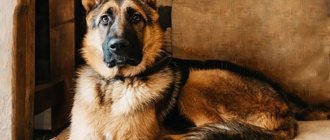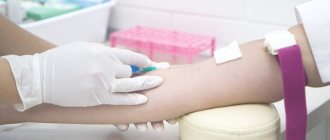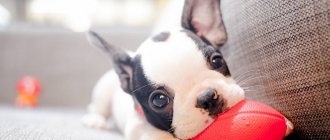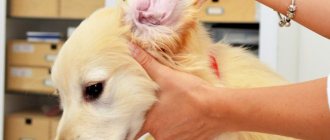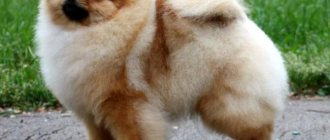Docking of Doberman dogs is the removal of ears and tails by surgical intervention. There is no consensus on this procedure: some people believe that Dobermans must have their ears and tail cropped, while others do not share this point of view, citing this as a reason for animal abuse and cruelty. This article will discuss historical aspects, the need for the procedure for Dobermans, the pros and cons, the recommended age for the operation, and its progress. The topic of where the operation is performed and its cost will also be covered with a summary.
History of tail and ear docking
This procedure was first used by Dobermans by the ancient Romans. Legionnaire dogs were among the first to be docked in order to maximally protect the Doberman from injury. This significantly increased the level of combat readiness and endurance. One of the famous Roman scientists, whose works were written about agricultural activities, said that local dog breeders firmly believed that if the caudal vertebrae were eliminated on the puppy’s 40th birthday, the tail would no longer grow, which would save the Doberman from such an insidious and a dangerous disease like rabies, which, as we know, has no cure.
A little later, other aspects appeared in favor of docking the tails and ears of Dobermans. The main goal was still considered the safety of the dog during active hostilities, hunting and possible damage from thorns and foxtail, accidental contact with which caused unpleasant discomfort in the animal.
Another reason why docking was performed was the financial interest of Doberman owners. The fact is that a dog tax was introduced in England and docking was an excellent opportunity to avoid tax liability. Using this procedure, dog breeders could show that the pet is not a hunting one. Only those individuals that had a long tail were recognized as such.
Docking a body part soon became the standard for winning at international exhibitions, and by that time safety had already lost its leading position. More than a century has passed since then, and the popularity of ear and tail docking among Dobermans is at a stable level.
Peculiarities of ear cropping in a Doberman
Why do you need to crop Doberman ears and tail? Beginning dog breeders often ask about this. Initially, hunting and fighting dogs were subjected to this procedure. Thus, it was possible to reduce the risk of injury during hunting or combat.
As a result, a certain breed standard was formed, which emphasized the special shape of the ears and tail of the Doberman. However, today hunting has lost its popularity, and many countries have banned dog fighting. It would seem that the need to shape the ears of Dobermans should have disappeared in itself.
But modern dog breeders with many years of experience in raising and training four-legged dogs insist on further carrying out such operations. It is believed that cropping Doberman ears significantly reduces the risk of ulcers, necrosis, neoplasms of various types, as well as wounds and injuries.
Ear cropping can be called a unique form of animal protection.
Representatives of the World Society for the Protection of Animals (OIE), who are trying to achieve a ban on the procedure for docking animals, do not agree with this version.
England, Austria, Germany, Holland and Scandinavia are countries that have introduced a ban on such operations.
At the same time, OIE representatives do not think about the fact that by their actions they are significantly reducing the number of Doberman Pinschers.
Similar article: How mating and pregnancy proceed in a Jack Russell Terrier
When should ears be cropped?
Remember one simple rule: the earlier the tail and ears are docked, the easier the animal will tolerate this procedure.
According to the recommendations of dog handlers and veterinarians, the optimal age of a puppy for such an operation is considered to be the life period from 3 to 10 days from birth.
In puppies, blood circulation is slower, and the healing process, on the contrary, occurs much faster. Cupping is also allowed at 5–8 weeks of age. However, the operation is already performed under anesthesia so as not to injure the animal.
It is not recommended to put ears on a Doberman during the period of teeth change, since at this time many vitamins and minerals are spent on the formation of the animal’s skeleton and jaw.
Preparing for surgery
Every veterinarian can crop Doberman ears, but only a few are able to perform the operation correctly and competently. Before you decide on the procedure, carefully study the reviews and recommendations of Dobermann breeders, find the doctor you can trust with your pet. Unfortunately, you can often meet on the street a beautiful and stately Doberman with terribly set ears.
A veterinarian's mistake or illiteracy can affect the animal's appearance. The dog should not be fed on the day of the procedure. Do not give the animal anything to drink at least two hours before anesthesia.
Features of the procedure
How does the Doberman ear cropping procedure work? The animal is given anesthesia; the procedure can begin only after the anesthesia has fully taken effect.
Experienced veterinarians adhere to a strict rule and crop no more than 2/5 of the entire ear.
If you neglect this rule, then there is a high probability that as a result of the operation the dog’s head will look disproportionate and ridiculous.
Along the expected cutting line and to fix the desired shape, special clips are installed on the four-legged ears. Clamps come in straight, zigzag and curved types.
Using a medical scalpel or a sharp blade, the doctor cuts off the hanging part of the ear, after which the lobe is carefully cut out with scissors. The wound must be sutured.
It is important not to catch the cartilage, otherwise the healed ear is considered disfigured.
Related article: Main types and common types of Spitz
Maintaining the same proportions, surgery is performed on the second ear. In fact, the cupping procedure is a surgical intervention that results in modification of the Doberman's ear. Set ears are the accepted standard for this breed.
Further care
Cropping is only the first stage of giving the ears the required shape. Now you need to place them correctly. So, how to put on the ears of a Doberman? Sometimes it is enough to follow the recommendations of the veterinarian who performed the operation to form “erect” ears on the dog.
The most primitive and easiest way is to glue the ears using a regular medical adhesive plaster.
To do this, you need to cut two strips of adhesive tape about 10 cm long and 4 strips of approximately 30 cm each. Carefully clean the auricle and insert a cotton swab inside.
Then, using the prepared strips of adhesive plaster, you form “horns”. Try not to pull the skin too much so as not to injure the animal.
Also, do not forget to step back 1.5–2 cm from the head in order to be able to observe the wound healing process after the cupping operation. After two weeks, the “horns” can be removed. If during this period of time the structure has become deformed or tilted, you will have to re-glue the strips of adhesive plaster and form new “horns”.
"Doberman ear cropping"
From this video you will learn how to crop a Doberman's ears.
Our readers' pets
Become authors, share photos of your pets Send a photo Do you have questions and need answers? specialist
Source: https://dogbuldog.ru/sobaki/porody/kupirovanie-ushej-dobermana-1269/
Does a Doberman need to have his ears cropped?
As it has already turned out, a remarkable tradition has its roots in the distant past. And if at that time the opinion was unanimous, now there are both supporters and opponents of the operation for the Doberman. In general, the ancestor of this breed is Louis Doberman, which is why the dogs received their official name. His goal was to create a universal fighter with good health. Ear and tail docking has become an effective method in the prevention of rabies and ear infections.
Modern ideas have long changed; docking is no longer mandatory and is performed at the personal discretion of the Doberman owner, although if we take into account the physiological characteristics of the breed, docking is beneficial for the dog’s health. The fact is that due to the natural structure of the auricle, the Doberman is prone to otitis media. That is why the ears need to be carefully cared for and undocked pets in this case are more susceptible to this problem. An effective prevention is periodic examination of the auricle by the owner or veterinarian to diagnose inflammation.
As for the appearance of the Doberman, a dog with undocked ears looks quite cute. It is the integral view that is considered natural and correct according to all natural laws.
How to put on a dog's ears at home
When a puppy is born, its ears are small and pressed close to its head, regardless of its breed. Further, as they grow, some dogs' ears become short, while others become long. In one breed they will hang, and in another they will stand. These factors primarily depend on genetics. And at first glance it may seem that this question should not worry anyone, because this is how nature intended it. It happens that a dog’s ears do not always form perfectly on their own. And for owners whose pets take part in exhibitions and win certificates and medals, this issue is very important. Also, some caring owners give their pets erect ears for hygiene purposes.
How to put on a dog's ears at home
You can also install a dog’s ears at home, but in order to do it efficiently and in no way harm the dog, you need to have sufficient skill in this difficult task, and also be patient, since this is not a matter of one day. Typically, dogs develop ears between two and five months. Therefore, it is necessary to start activities in this interval, approximately 3-4 months. As already mentioned, the dog needs a complete diet, but in addition, you may have to use one of the methods presented below.
If the dog’s ears still do not want to become independent, even though this is provided for by its breed, we suggest considering one of the presented methods.
The first method is to glue the ears with adhesive tape. To do this, you need to shave off the hair on the inside of both of the dog’s ears, and then place a thin stick against the edge of the ear and glue the patch in small pieces over the entire surface of the ear. Then, use the same stick to make a bridge that will not allow them to touch. In this case, this stick will serve as a splint that will support the auricle. It can be done by taking an ordinary cotton swab or a match - it all depends on the breed of the dog and the size of its ears. But the main thing to remember is that the patch cannot be glued to the fur and worn for more than 5 days, as it can injure the animal and cause an unwanted infection. To remove the patch, you need to peel it off slowly and then treat the dog’s ears with a disinfectant solution.
The second method is a special wire frame with a jumper, the so-called “crown,” which you can purchase at a specialized store or build yourself. The essence of this method is that the frame will support the ears in the correct, erect position, while separating them with a bridge. It must be attached to the dog’s head, for example with a bandage in several layers, not tied too tightly, and worn for at least 3-4 weeks, removing it at night so that the animal can rest.
In dog breeds whose ears must stand up, the ear cartilage will become more elastic and dense as the animal matures, and the ears will begin to rise on their own. If the size and shape of the auricle is determined by heredity, and it is not always ideal, then the posture is already formed in the process of ear growth, and it is now influenced not only by genetics, but also by the animal’s nutrition. Therefore, it is necessary that the dog’s daily food contains the necessary microelements, such as calcium, zinc, copper, iodine, chromium, as well as vitamins C, D, B2, B6, E, K2, P and other beneficial substances that promote the growth of strong collagen fibers But in addition to high-quality and regular nutrition, you need to pay attention to important points when setting up your ears:
- Be sure to constantly trim off excess hair that weighs down the dog’s ear;
- Do not allow anyone to touch, pull or play with the puppy’s ears - you can accidentally break the cartilage and it will never be possible to install the ears again;
- If ear installation is in progress, you should not allow the puppy to play with other dogs, as the design may be damaged and all efforts will come to nothing.
- Do not stroke the dog's head;
- Do not allow the animal to scratch its ears;
- Massage the ears;
- Add dissolved gelatin and grated eggshells to food.
- If there is an urgent need to glue the ears;
How to put on a dog's ears at home
Pros and cons of cupping
Now let's look more specifically at the advantages and disadvantages of the procedure.
Pros of cupping:
- improving health, reducing the risk of ear diseases;
- imparting rigor to appearance, improving aesthetic qualities;
- full compliance with the breed standard, which is an official pass to international exhibitions;
- ears and tail often get in the way when chasing an unscrupulous person. The more protruding parts of the body, the higher the likelihood of injury.
Disadvantages of cupping:
- the procedure cannot be called painless. The Doberman experiences unbearable pain during the operation, whines pitifully and tries to escape. In other words, during surgery the dog is stressed and it can be difficult to get him out of this state;
- cupping must be done in puppyhood, when they can easily tolerate anesthesia. The postoperative period in adult dogs is much worse and can drag on for a long time;
- there is a high probability of difficult wound healing, the occurrence of postoperative scars and scars. The development of unforeseen complications during the recovery period is also not excluded;
- participation in international exhibitions is impossible;
- the difficulty of communicating with representatives of its own species, since the animal’s ears take a standing position, which for other dogs is a sign of aggression and readiness to attack at any moment.
Is it possible to put ears on an adult dog?
It is known that almost any defect in an animal’s appearance is associated, first of all, with a gene that can carry various pathologies. Be it coat color, or incorrect ear placement. All this, as a rule, is passed on to future offspring. Problems with ear placement in dogs usually begin during puppyhood. At a time when rapid tooth growth occurs. Then the ear cartilage may begin to break. This process can take quite a long time – up to 1.5 years. And if you accidentally damage or break a dog’s ear cartilage, and then this situation is not corrected in time, this can lead to irreversible consequences.
The cartilage will overgrow and become stronger in the wrong position. To identify the causes of incorrect ear placement , an experienced veterinarian can use test results to understand exactly why a dog’s ears are not becoming and what is causing this. If it turns out that the dog has weak cartilages that were broken in childhood, then the defect will most likely have to be eliminated through surgery.
Is it possible to put ears on an adult dog?
Is surgery possible at other ages?
If the best time is missed, then this is not a reason to be upset. A 3 month old Doberman puppy can have his tail docked safely. But this is an extreme period.
Going beyond the time frame is fraught with complications, which is dangerous for the health of the Doberman.
Docking a puppy older than 3 months is strongly not recommended.
How to crop a Doberman's ears
Cupping requires prior administration of anesthesia. Used both local and general. The duration of the procedure is approximately = 30-120 minutes.
To begin, the Doberman lies sideways on the couch or operating table. Next, the dog is immobilized and muzzled. The baby's ears are straightened by applying a pattern and pushing the skin to the base. The device is left until it is given the desired shape. This is necessary to prevent the dog from bleeding.
Preparing for surgery
First of all, you should make an appointment with a veterinarian, who will issue a referral for urine and blood donation, and in some cases will require an ultrasound examination of the organs. All these measures are aimed at eliminating the body’s negative reaction to the administration of anesthesia, and the puppy itself is prepared as follows:
- carry out cleaning from worms and other parasites with special preparations no later than 14 days before the proposed operation;
- adjust the diet. The day before the procedure, the dog is not given food, but it is possible to drink water;
- the cut area is shaved;
- on the appointed day, body temperature is periodically measured, the normal value of which lies in the range of 37-39 degrees.
Stages of the procedure
Tail docking occurs by eliminating 2/3 of the tail or another length prescribed by the breed standard. There are 2 ways of circumcision:
- surgical. It is advisable to use docking in this way if the puppy is already 1 month old. The length of the tail is removed as follows: using inhalation, medications are administered internally to prevent increased salivation. Next, a tube is inserted to ventilate the air and prevent the tongue from sinking. They carry out all the technical details. A disinfecting bandage with an antibiotic is applied on top.
- conservative. This type of relief is considered a lightweight option, because it does not require the use of anesthesia or medical intervention. But the method is painful for the Doberman himself. Its essence is to tighten the tail with an elastic tourniquet, as a result of which blood circulation stops and the tail simply falls off.
Placement of cropped ears.
Cropped ears begin to be placed 2-3 weeks after cropping, when the edges of the ears have completely healed. By this time, it will become clear whether this procedure is necessary - in many dogs, the ears grow on their own and nothing needs to be corrected.
How quickly and easily the installation of the ears will proceed depends to a large extent on the shape the surgeon gives them. The simplest is a straight cut (also called a straight jaw cut).
Sometimes it happens that a dog's ears remain long. This makes the head look elegant, but risks bending one or both tips of the ears inward. Only dogs with dense cartilage, whose ears are standing at the time of cropping, can afford such ears. It is often impossible to provide too long care. In this case, the miniature schnauzer's ears will need to be re-cropped.
A bulky metal crown, used to set the ears of large breed dogs - Giant Schnauzers, Boxers and Dobermans, is rarely used for Miniature Schnauzers. Instead, use a regular washcloth for dishes of a suitable size. The main function of such a washcloth is to prevent your ears from curling inward; it is lighter than a crown and much more comfortable.
The healed ears are pulled up, glued with a plaster from the inside and attached to a washcloth with special glue or with a linen plaster. The soft surface of the washcloth does not injure the skin, and the absence of wire completely eliminates the possibility of injuring the head during active exercise and running over rough terrain.
It is important that the ears are fixed long enough. The recommended duration of continuous wearing of a crown by a puppy is 3-4 weeks. After this, the ears are released and they look at how they look. During this period (2-3 days), the cartilage is massaged with hands in different directions, improving its blood supply and helping to properly shape the ears.
There is an alternative option for gluing cropped ears using strips of adhesive glued from the inside of the ear and an ear stick.
How to position the ears
Cropped ears can be installed on a Doberman after surgery or during the recovery period. Staging is usually performed by a veterinarian. The crown is made as follows: a special prismatic metal structure is taken as the basis. It is stuffed with cotton wool and secured with a bandage to give it softness. Next, take 2 strips of plaster, 10 cm each, and glue them to the inside of the ears. The auricle is tightly attached to the crown, and the patch is fixed crosswise inside. A similar procedure is repeated with the second hole. This crown is usually worn for about 6 months and then removed.
How to care for your ears
The veterinarian writes out recommendations that must be strictly followed. Typically, the postoperative period for a puppy goes quickly and does not require much effort.
However, if the baby is too restless, then he needs pain relief.
Every day throughout the entire recovery period after cupping, the wound is treated with antiseptics. After 2 weeks, the stitches are removed, and then the ears can be installed. To speed up the healing process, it is allowed to do a manual massage in the direction from bottom to top.
Where is the best place to carry out the procedure?
Doberman tail and ear docking is recommended to be performed in a veterinary clinic under the guidance of an experienced doctor, since this surgical procedure must be fully supervised to avoid complications with irreversible consequences for the health of the Doberman.


